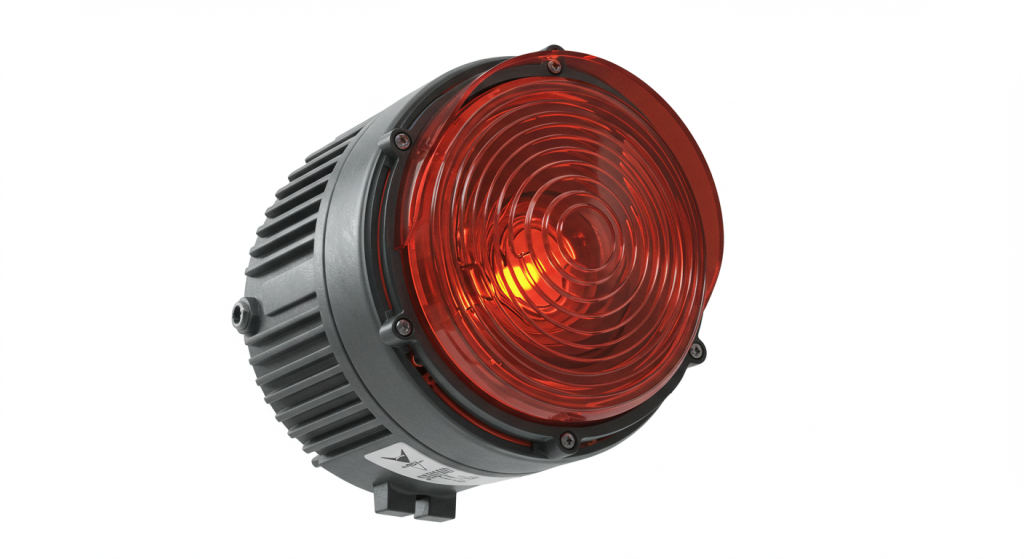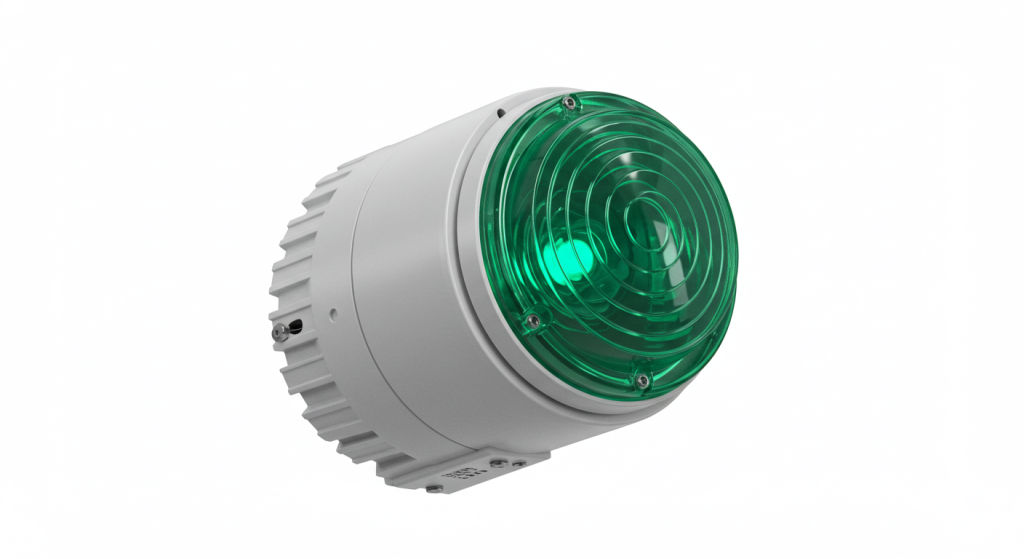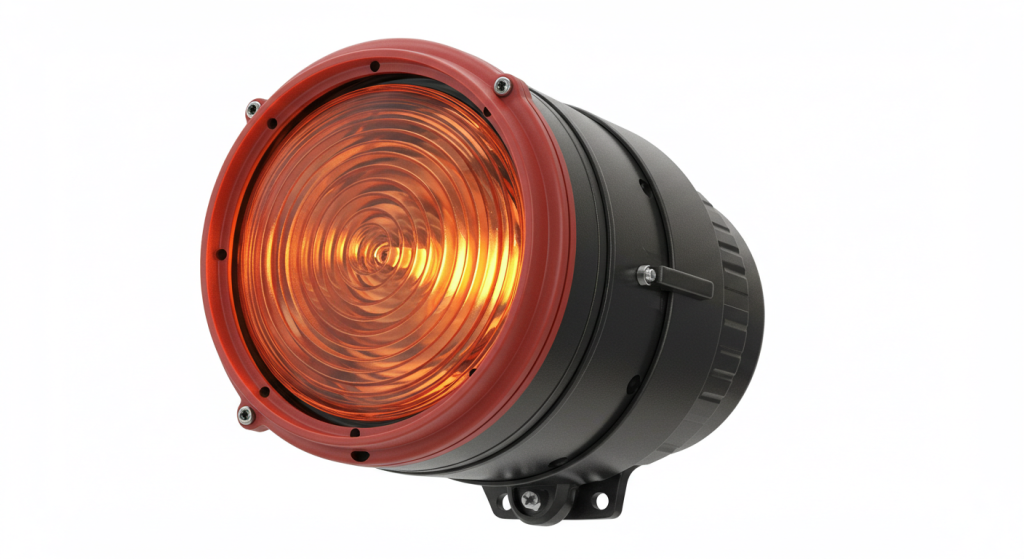This article delves into low-intensity flight warning lights, which play a crucial role in the aviation industry but are often overlooked. Starting from its basic principles, this article elaborates on its application scenarios on various types of aircraft, analyzes its advantages compared to high-intensity warning lights, explores the current technological challenges, and looks forward to future development trends, aiming to provide readers with a comprehensive understanding of the importance of low-intensity flight warning lights for flight safety and efficiency.
In the vast and boundless sky, aircraft shuttle back and forth, and there are many factors that ensure their safe and orderly operation, among which flight warning lights are an indispensable part. Low intensity flight warning lights, although not as eye-catching as engines and wings, silently escort flight safety behind the scenes. Whether it is civilian aircraft, private planes, or emerging aircraft such as drones, their protection is indispensable. It emits unique light to transmit critical information to ground personnel and other aircraft in different flight scenarios, avoiding collision accidents and ensuring a smooth start and safe end to every flight journey.

The principle of low-intensity flight warning lights
Luminescence principle
Low intensity flight warning lights are mainly based on semiconductor light-emitting technology, commonly such as light-emitting diodes (LEDs). LEDs are made of semiconductor materials, and when current passes through them, electrons and holes recombine, releasing energy and emitting light in the form of photons. Compared with traditional incandescent bulbs, LEDs have significant advantages such as low energy consumption, long lifespan, and fast response speed. Its luminescent color is usually red or white. Red light has a longer wavelength and relatively less scattering when propagating in air. It has strong penetration and is easier to observe from a distance; White light plays a role in certain scenarios that require high brightness illumination to assist recognition, such as near the runway area of an airport in low light conditions, helping pilots see the surrounding situation of the aircraft clearly.
Principle of light intensity adjustment
To meet different flight stages and environmental requirements, low-intensity flight warning lights have a light intensity adjustment function. This function relies on a precise circuit control system, which automatically adjusts the luminous intensity of the lights by sensing parameters such as external light intensity, aircraft attitude, and flight altitude. In strong daylight environments, increase the light intensity appropriately to ensure warning effectiveness; At night or in low light areas, reduce the light intensity to avoid glare interference to pilots and ground personnel, while saving energy. For example, when the aircraft enters an area with thick clouds and dim lighting, the light sensor detects a decrease in ambient light, and the control system immediately reduces the power of the warning light to maintain moderate visibility; Once it penetrates through the cloud layer, strong light triggers the sensor, and the light quickly returns to a higher brightness level, dynamically adapting to environmental changes.

Application scenarios of low-intensity flight warning lights
Civil aviation field
On passenger planes, low-intensity flight warning lights are installed at key positions such as the tip of the wings, the top of the fuselage, and the tail. During the takeoff phase, as the aircraft accelerates and slides, warning lights on both ends of the wings flash, indicating to the ground crew around the runway that the aircraft is about to take off and reminding them to avoid it; During the cruise, the continuously stable warning lights are clearly visible in the high-altitude background, allowing other aircraft flying in the same or opposite direction to recognize from a distance and maintain a safe distance according to air traffic regulations. Especially when flying across oceans at night, there are no obvious landmarks to reference on the vast sea. These faint but striking lights become an important maintainer of air traffic order, preventing air collision accidents caused by visual misjudgment.
For airport ground operation vehicles, such as tractors, refueling trucks, shuttle buses, etc., low-intensity warning lights are also equipped. They shuttle on the busy apron, with red warning lights rotating and flashing, informing pilots and surrounding staff of the direction and operational status of vehicles, ensuring that the aircraft is not disturbed during ground taxiing, parking, maintenance, and other processes, and maintaining the efficiency and safety of airport ground traffic.
General aviation and private aviation fields
Small private aircraft and operational aircraft frequently fly at low altitudes and frequently enter and exit some makeshift airports or airspace without tower control. At this point, low-intensity flight warning lights become their primary means of announcing their existence to the outside world. Flight enthusiasts fly light aircraft soaring in suburban airspace, with warning lights around the fuselage allowing ground residents to detect the approaching plane in advance and avoid unnecessary panic; At the same time, if an emergency landing is required due to unforeseen circumstances, flashing warning lights can guide rescue personnel to quickly locate in open fields, saving valuable rescue time and adding an extra protective lock for the pilot’s life safety.
Application scenarios of unmanned aerial vehicles
With the rapid development of drone technology, drones are widely used in fields such as aerial photography, agricultural crop protection, and logistics distribution. Low intensity flight warning lights are essential accessories for compliant flight of drones. Taking urban aerial photography as an example, in the environment of high-rise buildings, the warning lights carried by drones flash at a prescribed frequency to inform ground pedestrians and building occupants of drone activity in the sky and prevent accidental collisions; When agricultural crop protection drones operate above vast farmland, the lights not only warn surrounding farmers, but also facilitate remote monitoring of the drone’s position, ensuring precise coverage and orderly progress of spraying operations. Moreover, in the collaborative operation scenario of drone swarms, the warning lights of different drones flash in a specific coding pattern to distinguish their identities and tasks, helping the cluster to collaborate efficiently, avoid mutual interference and collision, and achieve synchronous execution of complex tasks.
The advantages of low-intensity flight warning lights
Energy consumption advantage
Compared to high-intensity aviation lighting equipment, low-intensity flight warning lights have significantly reduced energy consumption. In long-term flight missions, this feature is of great significance for aircraft, especially for battery powered drones or small navigable aircraft. Taking a civilian quadcopter with a 2-hour endurance as an example, if traditional high-intensity warning lights are used, power consumption may account for more than 30% of the total electricity consumption, greatly reducing operation time; After replacing with low-intensity and efficient warning lights, the energy consumption can be controlled within 10%, significantly extending the effective working time of the drone in the air, improving the efficiency of completing a single task, reducing the interruption caused by frequent charging, and providing solid support for tasks such as large-scale mapping and long-term monitoring.
Visual adaptability advantage
The human visual system has a certain adaptation range to changes in light intensity, and excessively high-intensity light sources can easily cause visual fatigue and glare, interfering with pilots’ observation and judgment of flight instruments and the external environment. The low-intensity flight warning light emits soft light that matches the physiological characteristics of human visual perception. Whether looking out from the cockpit or ground personnel looking up at the sky, it will not cause momentary strong light stimulation. Air traffic controllers who have been on night flight duty for a long time have reported that facing low-intensity warning lights on frequent takeoff and landing aircraft, the visual comfort is high, and they can more accurately focus on the monitoring screen and the dynamics outside the window, accurately command traffic, reduce the risk of command errors caused by visual fatigue, and create a good human-machine interactive visual environment for flight safety operations.
Hidden advantage
In certain special mission scenarios, such as military reconnaissance drones, secret operation helicopters, etc., the concealment advantage of low-intensity flight warning lights is highlighted. This type of aircraft needs to complete its mission without exposing its own position as much as possible. The faint warning lights can meet the minimum collision warning requirements and are not easily captured by enemy optical detection equipment at a distance like high-intensity lights. In the low altitude infiltration operation at night, the helicopter cleverly avoids obstacles with low-intensity warning lights, quietly approaches the target area, avoids premature exposure of its whereabouts, ensures the smooth start of the mission, and seizes the opportunity for subsequent key actions.

Technical challenges faced by low-intensity flight warning lights
Challenges in adapting to harsh environments
Aircraft face complex and changing climate and environmental conditions, and low-intensity flight warning lights need to have strong environmental adaptability. In the extremely cold high-altitude stratosphere, temperatures can drop as low as minus 50 degrees Celsius or even lower. LED chips and internal circuit materials are prone to brittleness and performance degradation, which may result in decreased luminous efficiency and abnormal flicker frequency; In the tropical low altitude areas with high temperature and humidity, water vapor erosion and salt adhesion can corrode the outer shell of the lamp body and the connection parts of the circuit, causing short circuit faults and threatening the stable operation of the warning light. In addition, in the desert where sandstorms ravage and in the mountainous valleys where strong winds howl, lighting fixtures face the risk of physical impact and foreign object blockage. How to design a sealed, reinforced, and heat dissipating lamp body structure, and develop cold resistant, heat-resistant, and corrosion-resistant electronic components have become key challenges in improving the reliability of warning lights.
Challenges in Precise Control Technology of Light Intensity
It is not easy to achieve real-time and precise control of light intensity based on multiple environmental parameters. On the one hand, the accuracy and reliability of sensors need to be improved. Currently, light sensors are prone to misjudgment and inaccurate light intensity adjustment under complex lighting conditions, such as cloud layer light and shadow mottled and urban light reflection interference; On the other hand, the optimization of control system algorithms faces challenges, requiring comprehensive consideration of dynamic flight parameters of the aircraft (acceleration, angular velocity, heading changes, etc.), meteorological data (visibility, fog concentration, etc.), and relative position information of surrounding aircraft. Complex mathematical models need to be constructed to ensure that warning lights are always in the best visible state during the rapidly changing flight process, which puts strict requirements on software development capabilities and hardware computing power.
Compatibility challenges with aircraft integration
Aircraft with different models and purposes have different structures, and the electronic system architecture is complex and diverse. Low intensity flight warning lights, as additional components, need to be seamlessly integrated into the overall design of the aircraft. In the limited body space of small unmanned aerial vehicles, it is necessary to find a suitable installation position to avoid affecting the center of gravity distribution and aerodynamic performance, while also solving problems such as power supply line laying and signal transmission interference; Large passenger aircraft face the challenge of electromagnetic compatibility with the massive electronic equipment network on board. The electromagnetic radiation generated by the warning light circuit cannot interfere with the normal operation of key systems such as navigation, communication, and autopilot. Conversely, it must also resist electromagnetic interference from the aircraft’s main system, ensure stable self illumination, and achieve harmonious coexistence and collaborative work with various systems of the aircraft.
The future development trend of low-intensity flight warning lights
Trends in intelligent development
In the future, low-intensity flight warning lights will deeply integrate artificial intelligence and IoT technology, transforming into intelligent perception nodes. With the help of a built-in microprocessor and machine learning algorithms, it can not only automatically adjust the light intensity and flashing mode according to preset rules, but also analyze the surrounding airspace traffic situation in real time, predict potential collision risks in advance, and actively issue warnings to pilots or ground control systems. For example, when multiple drones are detected approaching rapidly in the same airspace, the warning lights automatically switch to a high recognition flashing sequence, and collision avoidance suggestions are pushed to the drone operator through a wireless communication module, achieving a leap from passive warning to active defense and comprehensively improving the safety of low altitude flight.
Trend towards multifunctional integration
To meet the multifunctional requirements of aircraft, low-intensity flight warning lights will integrate more functions. In addition to basic warning functions, it is expected to integrate functional modules such as lighting assistance and environmental monitoring. In the nighttime wilderness emergency landing scenario, the warning lights can instantly switch to high brightness emergency lighting to illuminate the surrounding terrain and assist pilots in escaping; At the same time, the built-in micro meteorological sensor can collect real-time data such as wind speed, humidity, and air pressure, which can be transmitted back to the aircraft cabin, providing first-hand meteorological information for flight decision-making, expanding the single warning function boundary of warning lights, and becoming a comprehensive intelligent unit for aircraft flight assistance.
Trends in energy conservation, environmental protection, and material innovation
With the increasing global emphasis on energy conservation and environmental protection, low-intensity flight warning lights will continue to make breakthroughs in energy conservation, consumption reduction, and sustainable use of materials. Developing more efficient luminescent materials to further reduce energy consumption and extend the range of battery powered aircraft; Exploring biodegradable, lightweight, and high-strength shell materials to reduce environmental pollution caused by discarded lighting fixtures, in line with the trend of green development in the aviation industry. For example, by using new organic luminescent polymer materials, the luminescence performance can be improved while reducing manufacturing process energy consumption, achieving a green upgrade from the material source to the entire life cycle of product application, and helping to achieve the grand goal of sustainable development in the aviation industry.
Conclusion
As a key component of the aviation safety assurance system, low-intensity flight warning lights have demonstrated their unique charm and important value from basic principles to diverse applications, from significant advantages to challenges, and to promising development trends in the future. Although there are many technological bottlenecks at present, with the advancement of technology, it is believed that low-intensity flight warning lights will continue to evolve in the directions of intelligence, multi functionality, energy conservation, and environmental protection, guarding every flight with more outstanding performance, illuminating the path forward for the vigorous development of the aviation industry, and making traffic on the blue sky safer, more efficient, and orderly.